When it comes to woodworking projects and construction projects, choosing the right adhesive can be as crucial as selecting the right materials. So which one, liquid nails or wood glue?
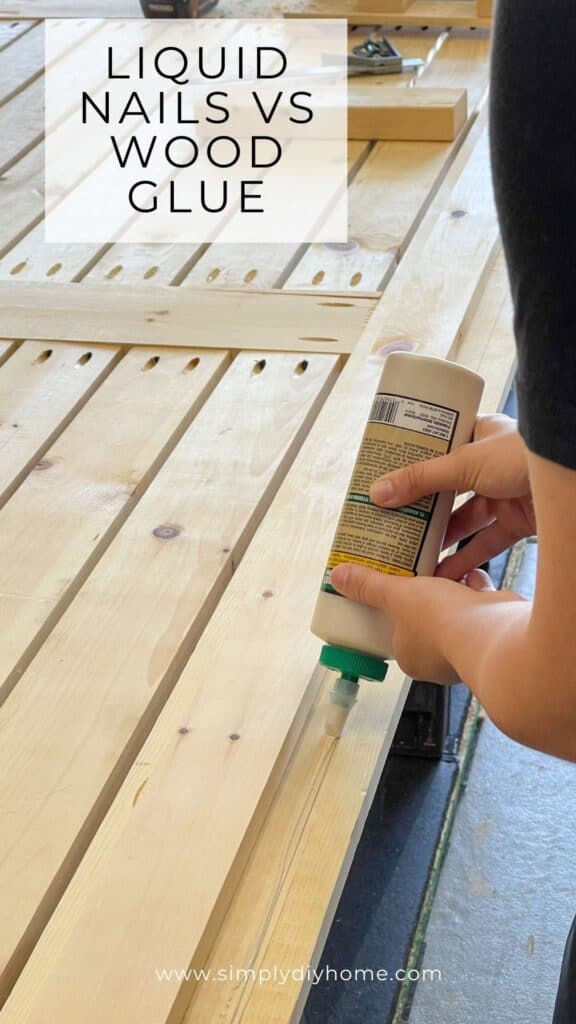
To assist you in making a well-informed decision, we will conduct a thorough comparison between two adhesive options: Liquid Nails and wood glue.
This comparison will empower you to select the adhesive that best aligns with the specific demands of your project! In the battle of Liquid Nails vs. wood glue, which adhesive will win? Let’s dive into their characteristics, strengths, and ideal uses to determine which one right for your specific project.
[AFFILIATE LINKS ARE PROVIDED BELOW FOR CONVENIENCE. FOR MORE INFORMATION SEE MY DISCLOSURE HERE.]
Liquid Nails vs Wood Glue – How Are They Different and When to Use Each of Them
It’s kind of funny we are comparing these two adhesives against each other because in reality they have nothing in common other than the fact that they hold stuff together.
Wood glue is used strictly for holding wood together and Liquid Nails is a construction adhesive. Like most products there are pros and cons, so let’s break each adhesive down so we can know them better.
What Is Liquid Nails?
Liquid Nails is actually a popular brand name that is a type of adhesive. Construction adhesives are designed for bonding and securing various construction materials. It is a type of construction adhesive commonly used in building projects. Liquid Nails adhesives come in liquid form, and they are typically applied using a caulking gun or squeeze tube.
I typically avoid using construction adhesives on my indoor projects but there comes a time and place for them. Recently, I use it in addition to my 16 gauge nail gun to hang wood on our bathroom ceiling. NO ONE wants that falling down on their head!
Strength
Liquid Nails has some strong bonding capabilities! They are used to bond a wide range of materials, including wood, metal, stone, concrete, drywall, ceramics, and more. Construction adhesives are commonly used for tasks such as attaching paneling, molding, doors and windows, and countertop backsplashes.
Liquid Nails adhesives are designed to create strong and durable bonds. They can be bought in many different formulas for different materials. Overall, they are created to have a long-lasting bond and considered permanent.
Drying Time
Liquid Nails adhesives typically require some time to cure and reach their full strength. Making sure to follow the manufacturer’s recommendations for curing times, which can vary depending on factors like temperature and humidity is very important.
Factors like weather conditions can influence dry times. High temperatures and lower humidity levels generally result in faster curing, while cooler temperatures and higher humidity levels may slow down the curing process.
Anytime I have used a construction adhesive I like to reach for Loctite Power Grab Express Heavy Duty Construction Adhesive. You have 15 minutes to reposition and it’s fully cured in 12 hours.
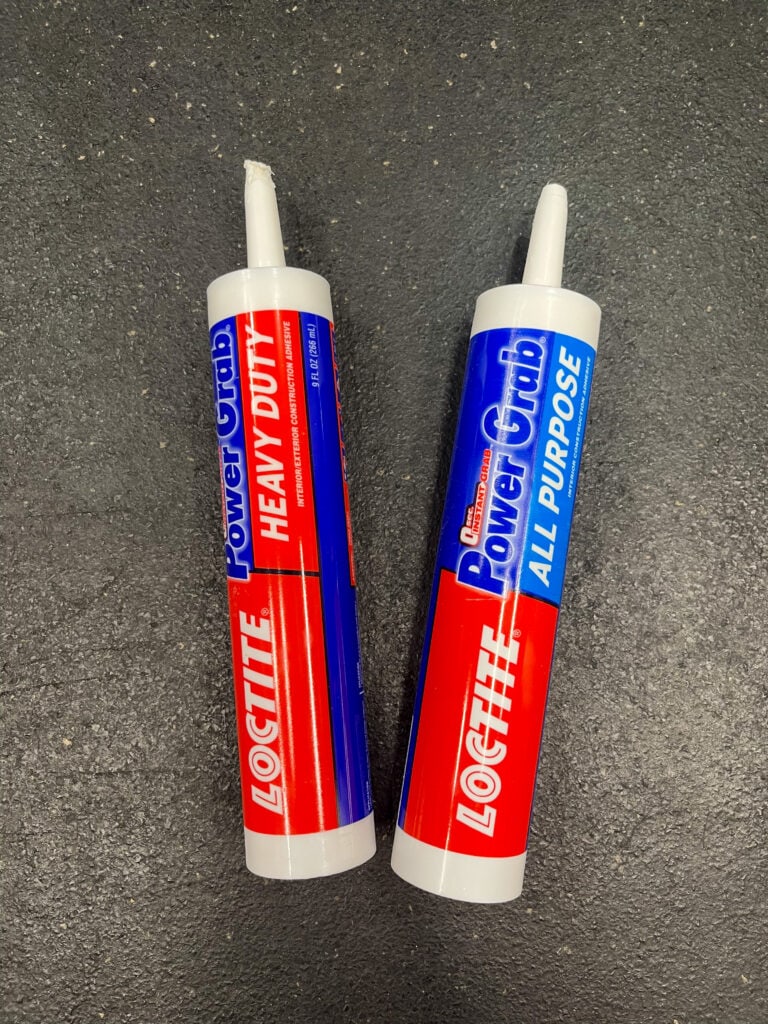
Ease of Use and Cleanup
As far as ease of use Liquid Nails is typically easy to apply. It comes in a tube like this and all you need is a caulk gun to apply it to your surface. A fun little FYI if you are using a caulk gun there is a tiny hole on the backside of the caulk gun by the trigger that you can insert the tip of your Liquid Nails into and cut the tip off!
Embarrassing, it was just until last year that I learned this!
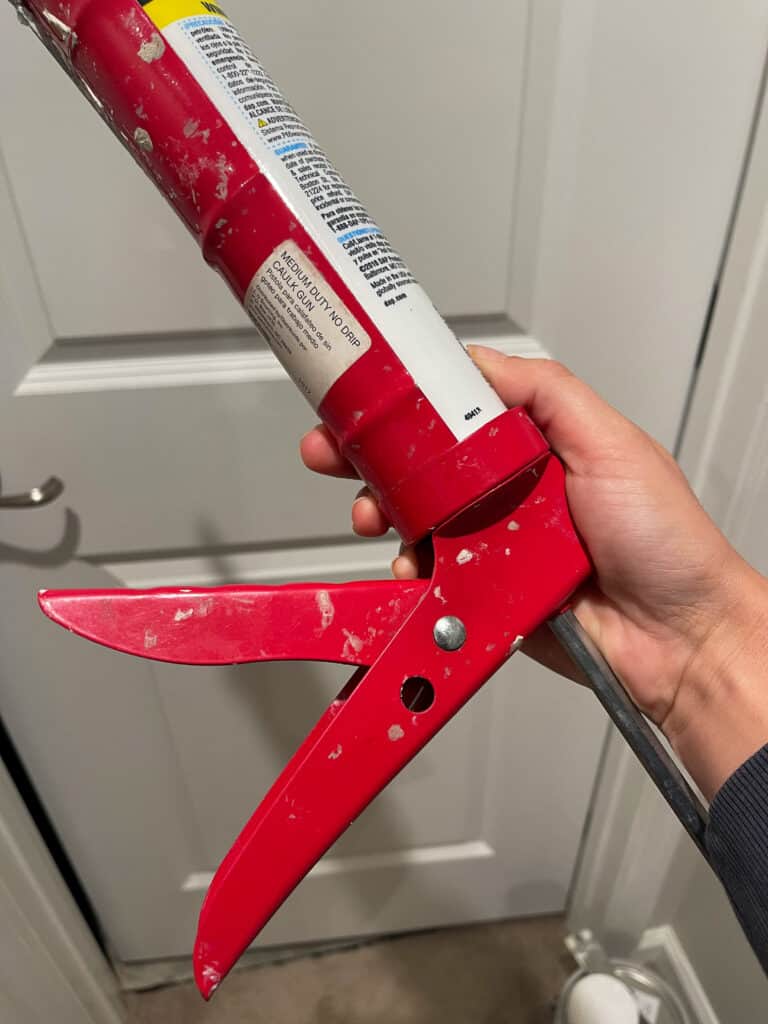
Once you’re ready to apply, ensure that the surfaces you intend to bond are clean, dry, and free from dust or dirt. In some cases, you may need to use clamps or other methods to hold the bonded materials in place while the adhesive cures.
If you accidentally get Liquid Nails on your skin, tools, or surfaces where you don’t want it, it’s best to clean it up immediately with a wet cloth or wet paper towel. If you have dried Liquid Nails on a surface that you don’t necessarily want it on Liquid Nails offers a product called “Liquid Nails Adhesive Remover” that can help in cleaning up.
Water and Weather Resistant
Like most adhesives or glues, Liquid Nails does have various formulations that are water and weather resistant. Choosing the correct formulation will get you the desired results.
Cost and Storage
The cost of Liquid Nails can range from a few dollars for a small tube to $10 or more for larger cartridges. Depending on the type of formula and size of tube will come into play with how much it cost.
Overall most Liquid Nails aren’t going to break the bank and are pretty affordable!
What Is Wood Glue?
Wood glue, also known as carpenter’s glue or woodworking glue, is like the superhero of your DIY projects. This type of adhesive is specifically designed for bonding pieces of wood to other pieces of wood together.
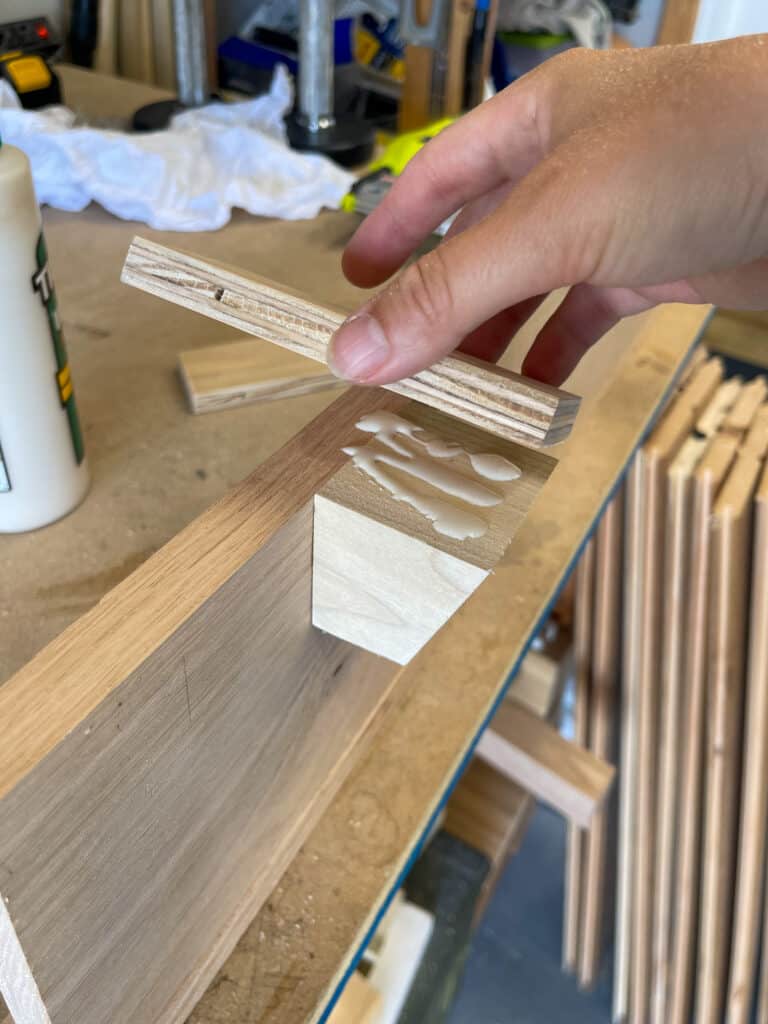
Strength
Wood glue maybe the superhero of DIY projects but, just like in the movies, not all heroes are created equal.
You see, the strength of wood glue can change depending on the glue types you pick. When applied correctly they say wood glue can be stronger than nails. There are a few options to choose from of the strongest wood glues:
- PVA (Polyvinyl Acetate) Wood Glue: This is the most common type of wood glue and is available in various formulations. It’s your everyday hero, the Captain America of glues, dependable and ready to bond wood strongly. It can be as strong as the wood itself.
- Polyurethane Glue: Polyurethane wood glues, such as Gorilla Glue, is known for its excellent bonding strength and water resistance. It’s great for any situation.
- Epoxy Wood Glue: It’s incredibly strong and can hold wood together like nobody’s business. But, its exact strength depends on the specific type of epoxy resin you choose.
Drying Time
The drying and curing time of wood glue can vary depending on the type and brand of glue. In general, it’s important to clamp or secure the wood pieces being glued to ensure a strong bond while the glue cures.
In ideal conditions, typical dry times for common PVA wood glue, is approximately 30 minutes to 1 hour. The full cure time for wood glue can range from 24 hours to 72 hours or longer.
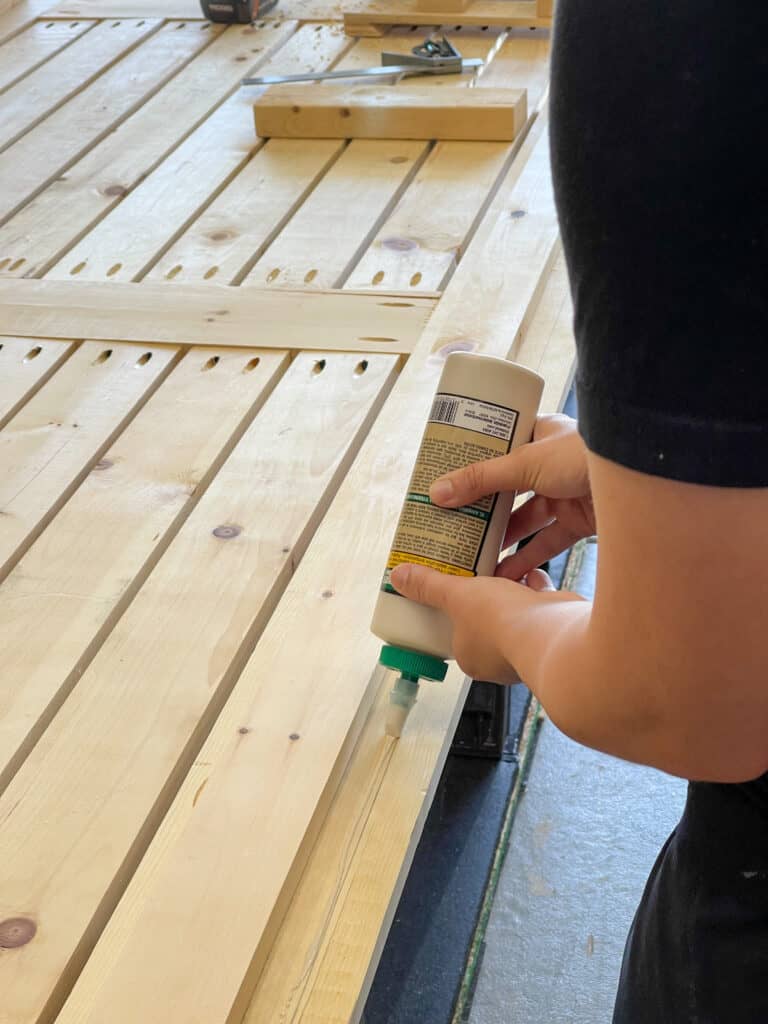
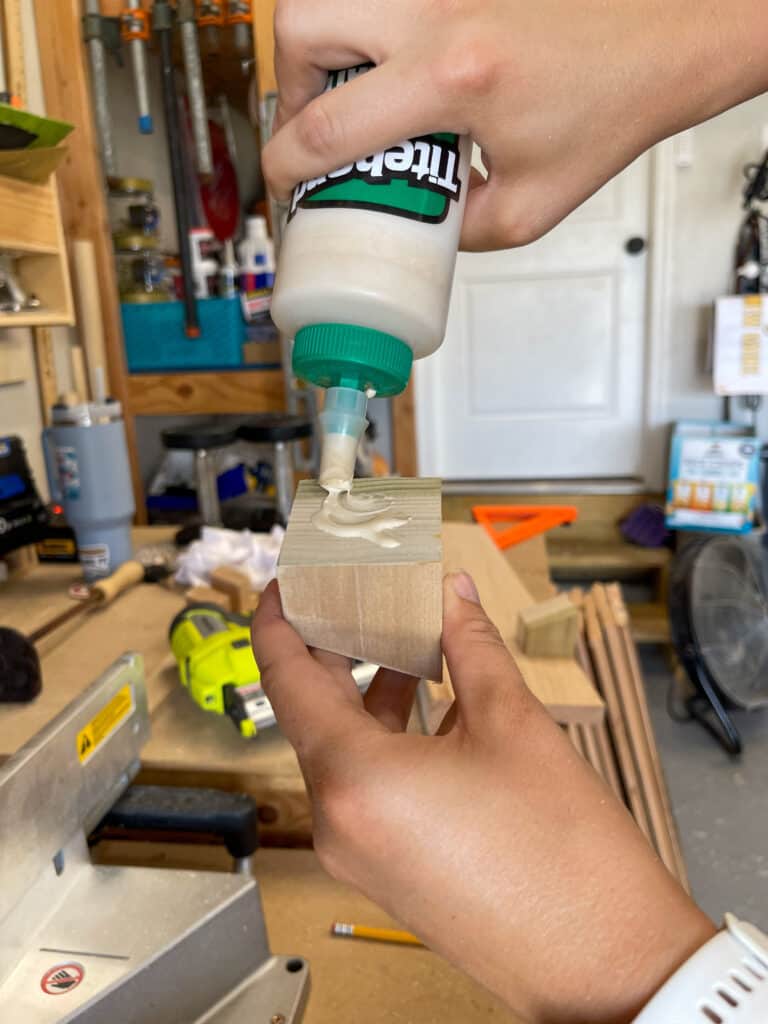
Ease of Use and Cleanup
Cleaning up wood glue is relatively easy when it’s in its wet or uncured state. However, once it dries, it can be more challenging to remove.
Cleaning Up Wet Wood Glue: The best time to clean up wood glue is while it’s still wet. As soon as you notice excess glue on the surface, use a damp cloth to wipe it away.
Cleaning Up Dried Wood Glue: If the wood glue has fully dried, it will likely need to be scraped off the surface. You can do this by scraping with a utility knife or sandpaper. And in some cases, you may use a solvent like acetone or mineral spirits to soften and remove dried wood glue.
Water and Weather Resistant
Your standard wood glue (PVA glue) is not water-resistant or weather-resistant. These types of wood glue are water-soluble and are designed for interior use in dry conditions only. However, some wood glues are specifically formulated to be water-resistant or even waterproof.
These wood glues will be labeled for outdoor projects use. I used outdoor wood glue on our 8 FT outdoor table I built last summer and it’s still going strong!
Cost and Storage
The cost of wood glue can vary based on factors such as the brand, type of glue, and the size of the container. Generally, you can expect to pay a few dollars for a small bottle. Or, upwards of $15 or more for a bigger bottle or speciality bottles of glue.
As for storing your wood glue, making sure your bottle is sealed properly when you’re finished using it, is very important. The worst thing is when you don’t wipe your nozzle off and the wood glue drys. Then your stuck scraping wood glue off the top of your bottle hoping you will be able to use it again!
Other things to consider when storing your wood glue is temperature. If the glue ends up freezing it could alter its adhesion properties making it useless.
Conclusion: Liquid Nails Or Wood Glue?
I hope the break down of each adhesive has helped you in deciding which one is better choice for your project. The key differences are, Liquid Nails is a brand of construction adhesive that is great for bonding and securing various materials. While wood glue is best for bonding wood surfaces to wood surfaces.
If there are anymore comparisons you would love me to cover don’t be shy and send me an email [email protected] or reach out to me on Instagram!
Until next time, Happy Building!
